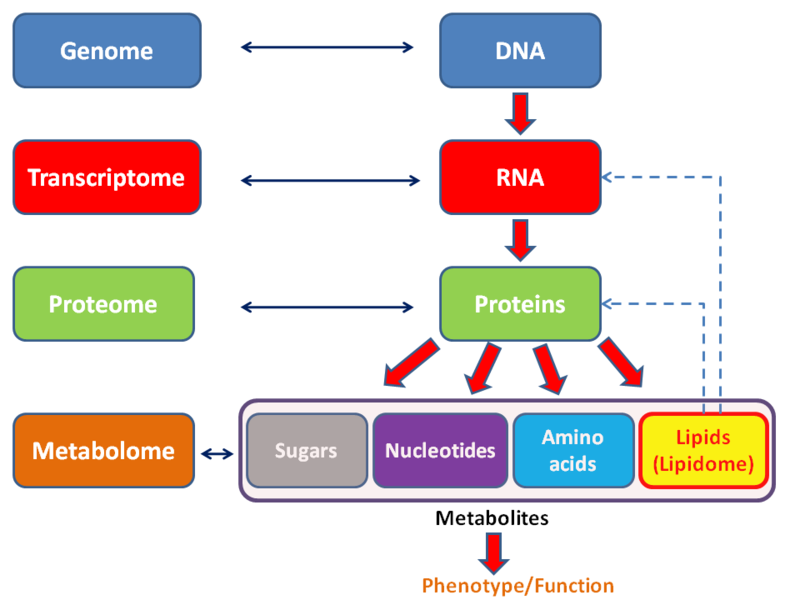Each of the omics studies a subset of molecular biology with a data intensive and broad point of view that tries to understand global function or organisms, trying to understand what every biologically relevant molecule does as part of the hole metabolism.
The main omics are:
Omics might be stamp collecting, but maybe it is a bit more like Trading card game/Magic: The Gathering collecting, in which the cards that you are collecting actually have specific uses and interactions, especially considering that most metabolic pathways are analogous across many species.
Hierarchical diagram of the major omics
. I guess ended up doing all the "how things should look like" features because they clarify what the website is supposed to do, and I already have my own content to bring it alive via
ourbigbook --web upload.But now I honestly feel that all the major elements of "how things should look like" have fallen into place.
I was really impressed by Trillium Notes. I should have checked it long ago. The UI is amazing, and being all Js-based, could potentially be reused for our purposes. The project itself is a single-person/full trust notetaking only for now however, so not a direct replacement to OurBigBook.
- upload all of cirosantilli.com to ourbigbook.com. I will do this by implementing an import from filesystem functionality based on the OurBigBook CLI. This will also require implementing slit headeres on the server to work well, I'll need to create one
Articlefor every header on render. - get
\xand\Includeworking on the live web preview editor. This will require creating a new simple API, currently the editor jus shows broken references, but final render works because it goes through the database backend - implement email verification signup. Finally! Maybe add some notifications too, e.g. on new comments or likes.
A non-tool-assisted speedrun.
Ciro Santilli views humans as biological robots, and therefore RTA videos can be thought of as probabilistic TAS with human achievable reflex constraints.
This aspect is especially highlighted in "speed run record evolution videos", which can be quite fun, e.g. www.youtube.com/watch?v=pmS9e7kzgS4 Ocarina of Time - World Record History and Progression (Any% Speedrun, 1990s-2017) by retro (2017)
From a similar point of view, Ciro also sometimes watches/learns a bit about competitive PvP games from a "could a computer play this better than a human" point of view.
Ciro also likes to watch commented manual speedruns of games as a way of experiencing the game at a high level without spending too much time on it, often from Games Done Quick. Their format is good because it generally showcases one player focusing more on the gameplay, and three couch commentators to give context, that's a good setup.
It is a
Simulates vintage hardware synthesizers, and includes some pretty complex ones!
Aims to show an UI that looks exactly like the synthesizers in question.
It is just mind blowing that Christians, Muslims and Jews can have so many conflicts considering that their religions are basically the same. Uncanny valley comes to mind. See also remarks at: cirosantilli.com/china-dictatorship/zhong-gong
The transfiguration of Jesus is a notable example where Jesus/the Church tries to divert older religions into him. And then Muhammad does the same during isra and Mi'raj, and meets up with Jesus, John the Baptist and Abraham. The Kaaba was also clearly an earlier place of worship of local religions before Muhammad. But of course, Abraham was one of the builders of the Kaaba, so all good.
There are unlisted articles, also show them or only show them.
